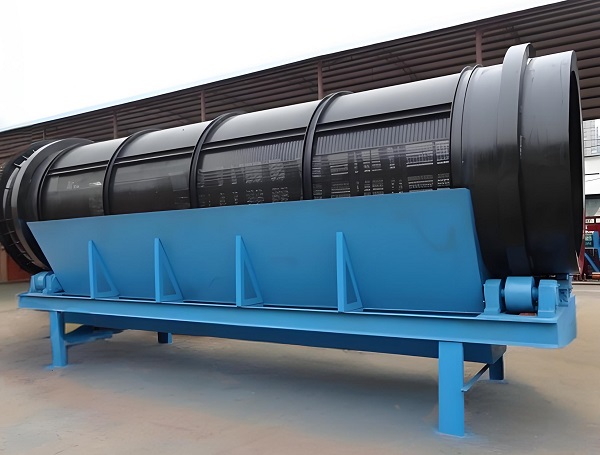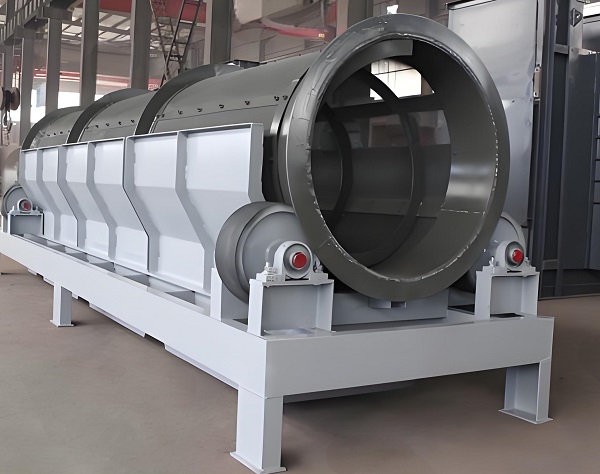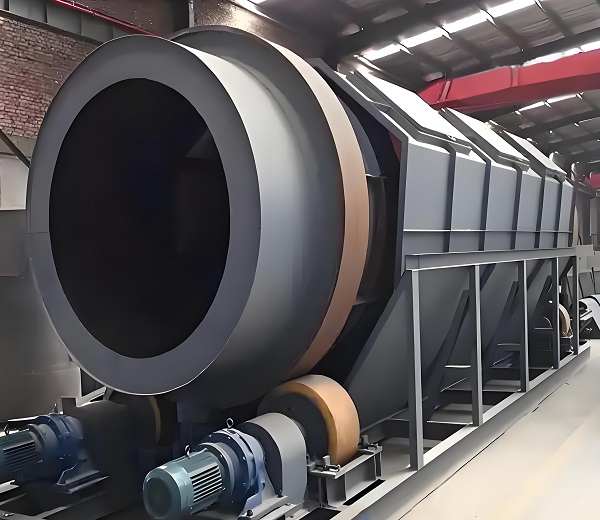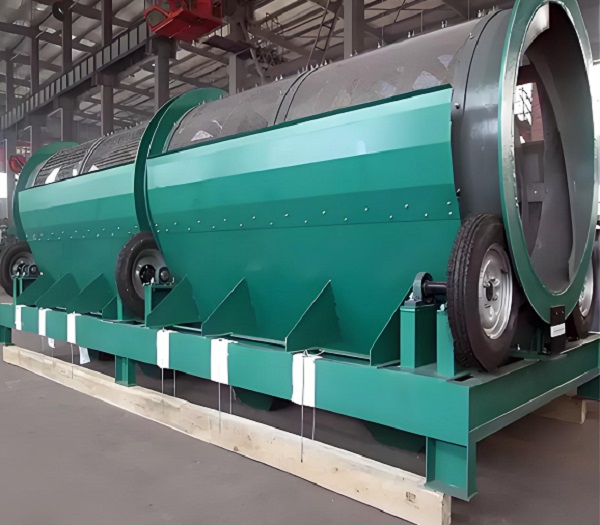In the rapid development of urban construction, the amount of construction waste is increasing day by day. According to relevant data, the annual emission of construction waste in my country is as high as billions of tons. The stacking of a large amount of construction waste not only occupies precious land resources, but also causes serious pollution to the surrounding environment. However, construction waste is not worthless waste. Through scientific and reasonable resource utilization, these seemingly useless wastes can be converted into reusable resources to achieve a win-win situation of economic and environmental benefits. In the industrial chain of resource utilization of construction waste, drum screens, as core equipment, play an irreplaceable key role.

Drum screen
1. Characteristics and treatment problems of construction waste
Construction waste has complex components and usually contains concrete blocks, bricks, wood, metals, plastics and various packaging materials. These wastes of different materials, shapes and particle sizes are mixed together, which brings great challenges to the treatment work. Traditional landfill and open-air stacking methods not only waste land resources, but also easily lead to environmental problems such as soil pollution, water pollution and air pollution. Therefore, it is urgent to achieve the reduction, harmlessness and resource treatment of construction waste.
2. The working process of drum screen in construction waste treatment

Drum screen
Pretreatment stage: Before construction waste enters the drum screen, it needs to be pre-treated. Generally, large pieces of concrete blocks, bricks and stones are crushed by crushers and other equipment to reduce their particle size to a range suitable for drum screen processing. At the same time, magnetic separation equipment is used to remove metal impurities to prevent metal from damaging subsequent screening equipment.
Screening stage: Construction waste after pretreatment enters the drum screen. The screening drum of the drum screen is usually made of stainless steel or other wear-resistant materials, and the drum wall is provided with sieve holes of different specifications. As the drum rotates, the construction waste keeps rolling and jumping in the drum. Materials smaller than the size of the sieve hole, such as fine sand and gravel, powder, etc., will fall through the sieve hole to achieve preliminary screening. Materials larger than the size of the sieve hole, such as larger bricks and stones, wood blocks, etc., continue to rotate with the drum wall in the drum until they move to the discharge port for discharge. In this process, the inclination angle and rotation speed of the drum are the key factors affecting the screening effect. By reasonably adjusting the inclination angle and speed, it can be ensured that the material has enough residence time in the drum, fully complete the screening process, and improve the screening efficiency and accuracy.
Subsequent processing stage: The materials screened by the drum screen can be processed separately according to their different components and particle sizes. For example, the screened sand and gravel can be reused as construction sand, road base materials, etc.; the powder can be used to produce cement, bricks and other building materials after further processing; and the separated wood, plastic, etc. can be recycled and reprocessed to maximize the utilization of resources.
3. Reasons why the drum screen becomes the core equipment

Drum screen
Efficient screening capacity: The drum screen can realize continuous operation, with a large processing capacity, and can process tens or even hundreds of tons of construction waste per hour. Its unique structure and working mode enable the material to be fully tumbled and screened in the drum, greatly improving the screening efficiency and meeting the needs of large-scale construction waste treatment.
Accurate classification function: By accurately controlling the size of the sieve holes and adjusting the equipment operating parameters, the drum screen can accurately classify construction waste according to different particle sizes. This ability of precise classification provides a strong guarantee for the subsequent resource utilization. Materials of different particle sizes can be processed and reused in a targeted manner according to their characteristics and uses, which improves the utilization value of resources.
Wide applicability: Due to the complex and diverse composition of construction waste, screening equipment needs to have a wide range of applicability. The drum screen can adapt to construction waste of different materials, different humidity and different viscosity through adjustable structural design and operating parameters. Whether it is hard concrete blocks or wet soil, it can be effectively screened and processed.
Equipment stability and reliability: The construction waste treatment environment is relatively harsh, with large dust and strong vibration, and high requirements for the stability and reliability of the equipment. The drum screen adopts a sturdy and durable structural design and high-quality materials. The key components are specially treated and have good wear resistance and corrosion resistance. It can operate stably for a long time in harsh working environments, reducing the occurrence of equipment failures and reducing maintenance costs.
4. Practical application case analysis

Drum screen
Taking a large construction waste treatment plant as an example, the plant introduced advanced drum screen equipment for the resource treatment of construction waste. Before using the drum screen, the plant's construction waste treatment efficiency was low and the resource recovery rate was not high. The situation has been significantly improved after the use of drum screens. Through the efficient screening of drum screens, the plant can process hundreds of tons of construction waste every day, and effectively separate and recycle the sand, gravel, bricks and other resources. After processing, these recycled resources are used to produce new building materials, such as recycled bricks, recycled aggregate concrete, etc. It not only achieves zero emission of construction waste, but also brings considerable economic benefits to the company. At the same time, due to the reduction of landfill volume of construction waste, it also plays a positive role in protecting the local ecological environment.
As the core equipment for the resource utilization of construction waste, the drum screen plays a vital role in solving the problem of construction waste treatment and promoting resource recycling. With the continuous improvement of environmental awareness and the continuous development of construction waste resource utilization technology, the performance and application of the drum screen will continue to be optimized and expanded, making greater contributions to the goal of achieving green and sustainable urban construction.
Save Time! Get A Detailed Quotation Quickly.
